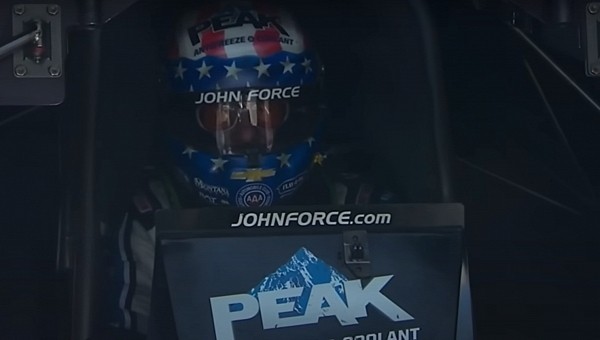While no fatal accident in auto racing is timely, Scott Kallita's death after an accident at Old Bridge Township Raceway Park in 2008 is evidence that death is not always in vain. As it so happens Kallita's death paved the way for significant safety advancements in Top Fuel, Funny Car, and Pro Stock
.
As it so happens, looking back on the just concluded NHRA Camping World season reveals what may have been had the safety features not been adopted for several drivers who experienced horrific accidents and engine explosions only to exit their cars unassisted and virtually injury-free.
This past August at the Lucas Oil Nationals, Doug Gordon climbed behind the wheel of his alcohol Funny Car for the opening round of eliminations. As he safely crossed the finish line and before his chute was deployed, his car violently lurched to the left and smashed into the wall at 245 mph (394 kp/h), landing upside down atop the wall. With his car demolished, Gordon climbed out of the car within seconds and walked away humbled, but without injury.
Two other scary incidents occurred just this last weekend at the Auto Club Finals in Pomona. Funny Car driver Matt Hagan, who was vying for the season championship was matched up against racing legend John Force in qualifying. After reaching over 245 mph (394 kp/h), his engine blew right before his very eyes and less than 3 feet (.91 meters) in front of him. He too, walked away unhurt.
Ironically, the very next day in the finals, a similar thing happened to John Force. In his 118th race against eventual winner Cruz Pedregon, his engine exploded roughly one-third of the way down the track and blew the carbon fiber car body sky high. He would also walk away without any problem.
Many believe that extra-supportive seat harnesses and head restraint features, in addition to shortening the famed 1/4-mile stretch down to 1000 feet (304.8 meters), have helped maximize the safety of the drivers.
.
As it so happens, looking back on the just concluded NHRA Camping World season reveals what may have been had the safety features not been adopted for several drivers who experienced horrific accidents and engine explosions only to exit their cars unassisted and virtually injury-free.
This past August at the Lucas Oil Nationals, Doug Gordon climbed behind the wheel of his alcohol Funny Car for the opening round of eliminations. As he safely crossed the finish line and before his chute was deployed, his car violently lurched to the left and smashed into the wall at 245 mph (394 kp/h), landing upside down atop the wall. With his car demolished, Gordon climbed out of the car within seconds and walked away humbled, but without injury.
Two other scary incidents occurred just this last weekend at the Auto Club Finals in Pomona. Funny Car driver Matt Hagan, who was vying for the season championship was matched up against racing legend John Force in qualifying. After reaching over 245 mph (394 kp/h), his engine blew right before his very eyes and less than 3 feet (.91 meters) in front of him. He too, walked away unhurt.
Ironically, the very next day in the finals, a similar thing happened to John Force. In his 118th race against eventual winner Cruz Pedregon, his engine exploded roughly one-third of the way down the track and blew the carbon fiber car body sky high. He would also walk away without any problem.
Many believe that extra-supportive seat harnesses and head restraint features, in addition to shortening the famed 1/4-mile stretch down to 1000 feet (304.8 meters), have helped maximize the safety of the drivers.








